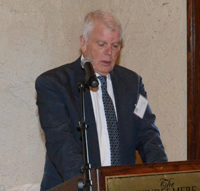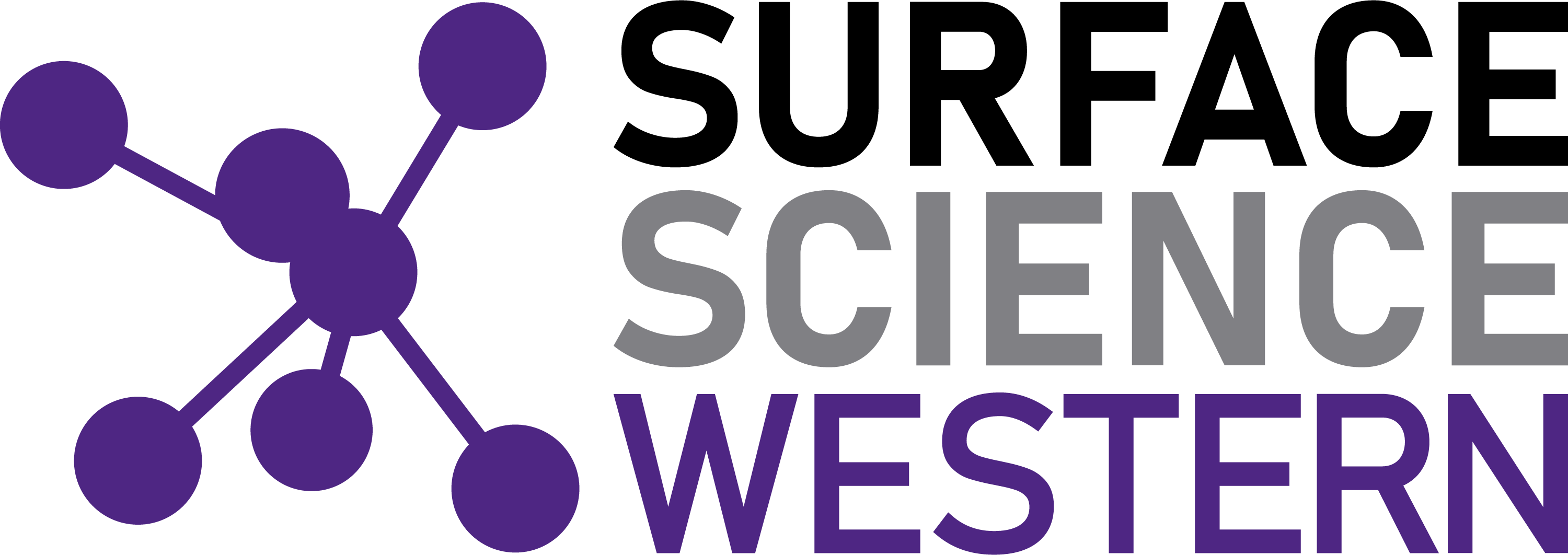 The following is a transcript of the keynote address from our 35th Anniversary Celebrations given by Dr. Stewart McIntyre, director of Surface Science Western from 1981 to 2005.
The following is a transcript of the keynote address from our 35th Anniversary Celebrations given by Dr. Stewart McIntyre, director of Surface Science Western from 1981 to 2005.
“Thank you all for attending this recognition of Surface Science Western staff, present and past, for their achievements in reaching this milestone. In these days of transitory relationships and short-lived organizations, it is noteworthy that SSW has endured for thirty five years, through a procession of academic trends and directions, as well as during economic times that were both opportune and difficult.
I want to speak about some of the reasons for this endurance despite a business model that has seemed wanting in the eyes of some experts, because SSW is neither a permanently- funded academic unit, nor is it a corporation with capital raised from shares. I would submit that SSW is the stronger because it has attributes from both models. Most of its operating capital comes from consulting revenue from industries that are, for the most part, local. However, other continuing funding support comes from the Faculty, as well as academics across the country and from grants and contracts. Their support has helped to continue to renew and upgrade the instrumentation needed to keep the lab competitive. It’s a tricky model but it works, because everyone, staff and supporters, recognize the value in keeping it working and expanding and they make the kinds of necessary compromises. In many ways it’s a Canadian compromise, born of a land with limited industrial research and grant resources, but with no end of ambition and good will.
No one group has worked harder to sustain the model than SSW staff. With many years of hard work and experience under their belt, they have constantly proved their mettle in rapid resolution of industrial production problems involving plastics, metals, coatings and mineral ores. As a result, their clients have returned again and again and recommended SSW as a valued supplier to other industries. And they earn roughly $1.5 million a year from these efforts! That amount is minor compared to the money that has been saved by client industries in lost process time and the competitive edge that this gives the Province and City in attracting industries to locate here. On the academic side, SSW staff work constantly to train and mentor students and PDF’s, sometimes attached to the lab, more often from other academics in universities here in Canada and around the world. In the last ten years, two hundred publications have been co-authored by SSW staff and the work done has engendered three hundred other papers involving SSW-trained students.
SSW staff knows and appreciate each others’ experiences, skills and outlooks. They have functioned together for many years. I suggest you look at the photo display that follows their progress through the years. They are a family with a rich history. In a time of reduced business during the severe economic downturn in 2007, they all chose to accept reduced hours in order to preserve the team and the precious complement of experiences that they possessed. And they emerged from that experience all the stronger!
I have known, collaborated with and appreciated all those who have served as leaders of SSW. The concept of Surface Science Western was first advanced by Professor Michael Bancroft of Western’s Department of Chemistry in 1980. Michael was (and is) a world respected scientist in the use of photoelectron and Mössbauer spectroscopy to measure chemical bonding processes. He had to work hard to convince his colleagues and UWO administration to fund a common pool of instrumentation and talent that would serve them as well as to develop industrial linkages. This was not a common concept in Western or in many other places in 1980. He became the first SSW Director.
Leo Lau was the “engine” of research within SSW in the 1980’s, developing a broad expertise and much respect in the field of science and engineering of semiconductor interfaces. He left for more senior academic responsibilities in Hong Kong in the late 1990’s, then returned to become SSW Director in 2005. He steered the lab successfully through some of its most trying times and with these efforts, SSW emerged to fight another day in splendid new facilities in the Research Park.
David Shoesmith came to Western from the Whiteshell nuclear industrial laboratory where he was a highly respected electrochemist. He successfully re-established and expanded his research effort here at Western and has become an internationally recognized authority on the storage of nuclear fuel waste in the geosphere. In 2011 he also took on the directorship of SSW and has brought SSW capabilities into his work on engineered coatings of waste containment vessels.
Surface Science Western has survived and prevailed through 35 years of effort and enterprise. I congratulate every member of SSW staff and its supporters within the University and the surrounding industries. But along with this I have a few suggestions. This lab is unique in that it is one of the few original university/industry surface science labs left standing. This dual-headed expertise is not common and it should be exploited further afield. Many of the world’s surface-related technologies are still in need of the kind of day-to-day support that SSW provides to its industrial clients. What SSW has done here in Western Ontario, can be exported to other jurisdictions, perhaps not by expanding the scope of their service to a more widespread client base, but rather by teaching and mentoring the SSW “brand” to other colleges and universities. This kind of approach would benefit from advice and involvement from our Business School and World Discovery Office.
As well, the lab has to look at renewal over the following years. Now is the time to begin to bring young scientists and engineers into the lab with a view to having them develop professional maturity before they take the places of more senior people. There is always some hesitation to invest in new personnel until the last possible moment. But surely, given the past successes of the lab it should be possible to convince governments to assist financially in an early training program, particularly in view of the recent emphasis to broaden Canada’s technological industrial base.
I thank you for the opportunity to speak. It was a pleasure to work and live with every member of SSW for many years and I wish you all the very best of good fruits from the technology tree in your future.”
 About Dr. Stewart McIntyre: Stewart served as the Director of SSW from 1981 to 2005. He has over 200 refereed publications in the field of surface science and related subjects with a number of highly cited papers particularly in the field of X-ray photoelectron spectroscopy. He is currently a Professor Emeritus in the Department of Chemistry at Western University and remains active in materials research, XRF and XRD applications.
About Dr. Stewart McIntyre: Stewart served as the Director of SSW from 1981 to 2005. He has over 200 refereed publications in the field of surface science and related subjects with a number of highly cited papers particularly in the field of X-ray photoelectron spectroscopy. He is currently a Professor Emeritus in the Department of Chemistry at Western University and remains active in materials research, XRF and XRD applications.

